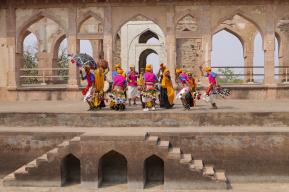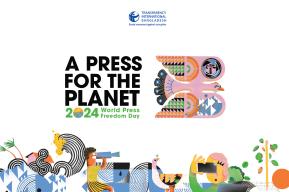News
Students participate in environmental DNA sampling in the Banc d'Arguin National Park in Mauritania

Eleven young people from the 4 schools in the park’s coastal villages of Mamghar, R'Gueiba, Teichott and Iwik headed out on board a surveillance boat and in the company of turtles and thousands of migratory birds. They took 21 water samples, filtered them, and fixed their eDNA according to the pre-established sampling protocol, using specialized equipment provided by UNESCO.
The eDNA samples are expected to reveal the main fish species that live in the UNESCO World Heritage site and constitute an essential element of its Outstanding Universal Value. The students were accompanied by an education inspector from Chami, the 4 directors of the aforementioned schools, experts from the Park, and a guide from the Imraguen community who has a great knowledge of the preferred areas of local marine biodiversity.
This sampling work by school students will make it possible to complete the biodiversity inventory of Banc d'Arguin. It strengthens UNESCO's leadership in this approach combining environmental education and new technologies for the study of biodiversity.
Environmental DNA is an innovative scientific method that can be used to monitor and evaluate ocean biodiversity without the need to extract organisms from their environment. Just one liter of water may contain genetic material from hundreds of species and may help determine the area’s biodiversity richness.
The UNESCO environmental DNA Expedition initiative is being rolled out across 25 marine World Heritage sites between September 2022 and April 2023. The eDNA data is expected to provide a one-off snapshot of biodiversity richness across marine World Heritage sites, particularly for fish species.
By combining the resulting biodiversity data with Intergovernmental Panel on Climate Change (IPCC) heat scenario projections, the initiative aims to provide a first glimpse of potential geographic and distribution shifts of fish species as a result of climate change which then in turn can inform conservation decision-making.
The eDNA Expeditions’ resulting data will be made publicly available through the UNESCO Ocean Biodiversity Information System, the world’s largest open science marine species database. Final results are expected to be available in Spring 2024.
The UNESCO eDNA initiative is a joint collaboration between the Intergovernmental Oceanographic Commission and the World Heritage Centre. It is made possible with the support of the Government of Flanders (Kingdom of Belgium) and implemented in the context of the United Nations Decade of Ocean Science for Sustainable Development (2021-2030).
About the Banc d’Arguin National Park World Heritage site (Mauritania)
The Banc d’Arguin National Park was inscribed on the UNESCO World Heritage List in 1989, and is one of the most important zones in the world for nesting birds and Palearctic migratory waders. Located along the Atlantic coast, this Park is formed of sand dunes, areas of coastal swamps, small islands and shallow coastal waters. The austerity of the desert and the biodiversity of the marine area results in a land and seascape of exceptional contrasting natural value. The vast expanses of marshes provide shelter to more than two million limicolous migrant birds. Several species of sea turtle and dolphin, used by the fishermen to attract shoals of fish, can also be found.






